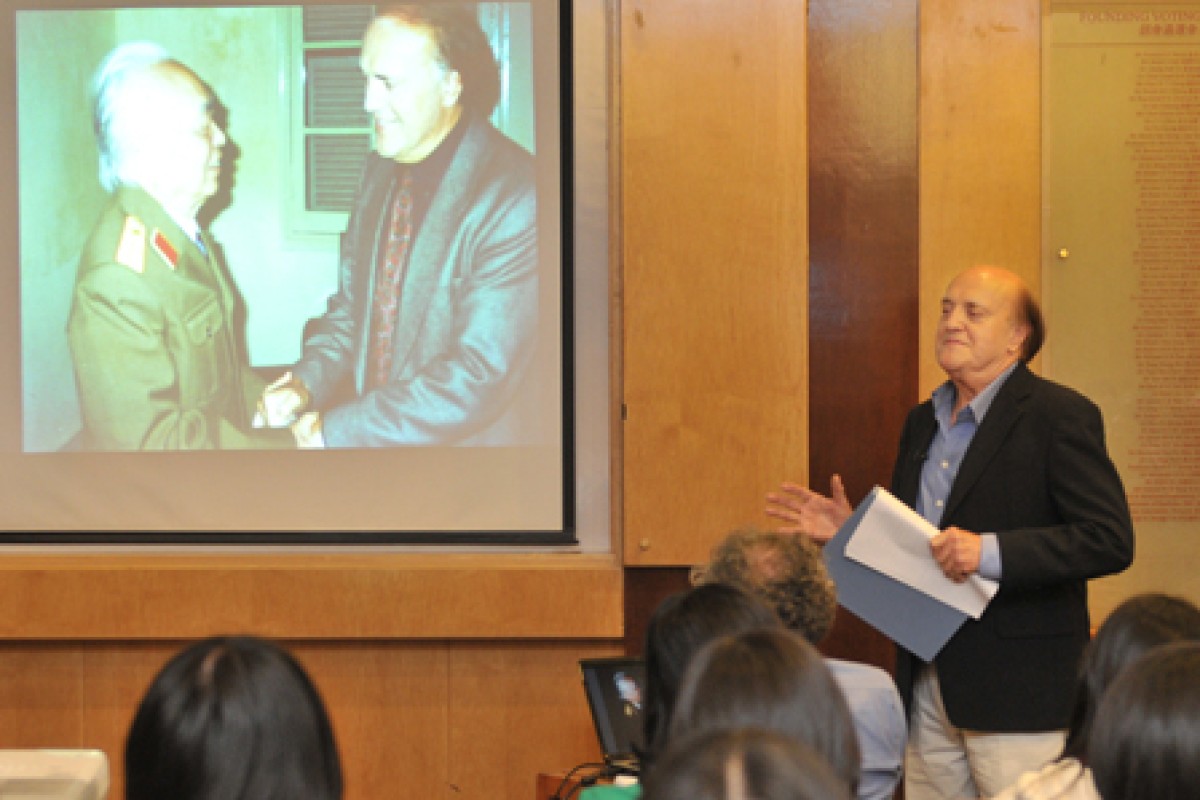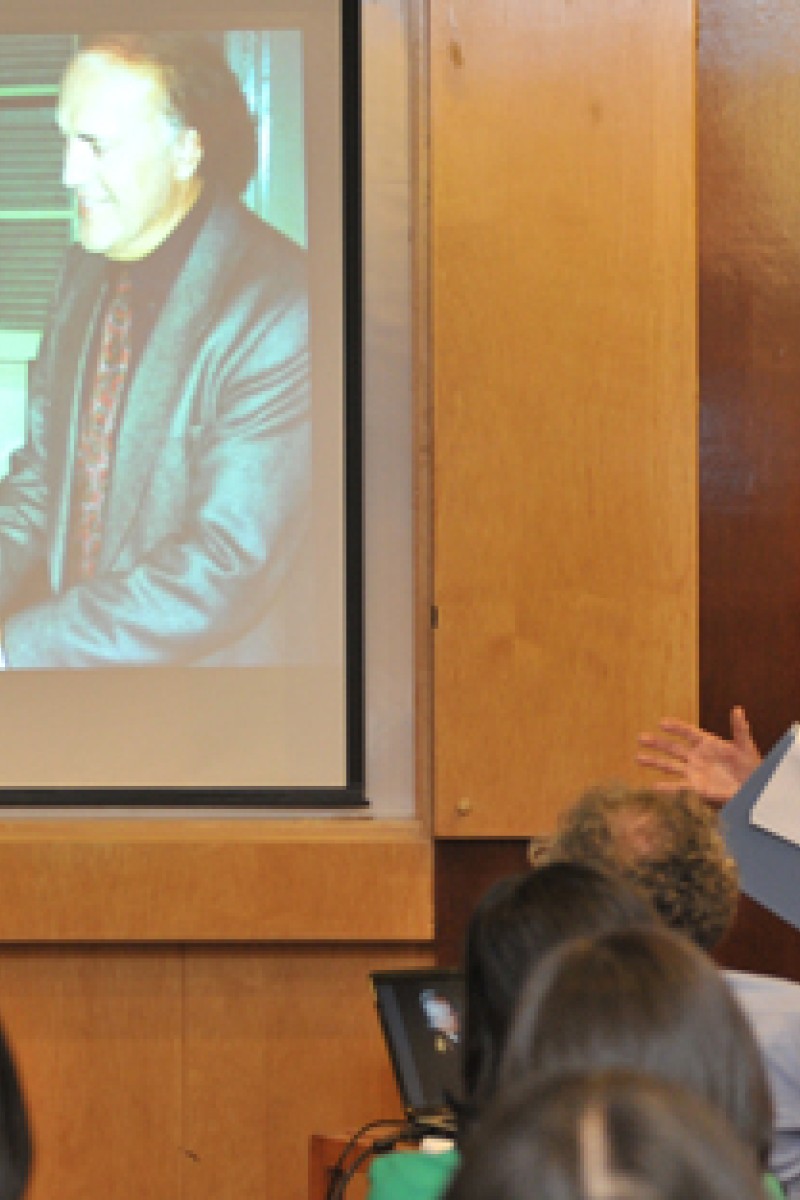 Former CNN war correspondent Peter Arnett speaks to aspiring journalists during a lecture at the University of Hong Kong.
Former CNN war correspondent Peter Arnett speaks to aspiring journalists during a lecture at the University of Hong Kong.Arnett was referring to the exclusive, explosive reports he broadcast during the first Gulf War in 1991.
He has been reporting from some of the world's most dangerous battlefields for 40 years and boasts an impressive profile.
Speaking at the University of Hong Kong last Friday, he told aspiring journalists in the audience about his exclusive interviews with two of the world's most notorious villains: Iraq's then-president Saddam Hussein and al-Qaeda leader Osama bin Laden.
During the 1991 Gulf War, the New Zealander was a reporter for the American news channel CNN.
"My job was to report what it was like to be in the eye of a hurricane," Arnett recalls.
Two weeks into the war, Arnett landed an interview with Saddam. He saw it as an "opportunity to communicate with Hussein when all communication channels and relations had been severed".
The Iraqi leader, he says, was portrayed as the "Hitler of the Middle East" - a belligerent man known for his appetite for war. Yet, rather than his trademark military uniform, Saddam showed up for the interview in a blue suit.
For a person known to execute dissidents on the spot, Hussein was "very genial and gave interesting responses", Arnett says.
Hours after the interview, the Iraqi dictator even had pictures of their meeting delivered to Arnett. "It was during a war, so he was very polite to do that," Arnett says.
The bombing of Baghdad - the first war covered live on television - and the interview were landmarks in media history. Arnett was the last Western reporter to interview Saddam.
Six years later, in 1997, Arnett became the first Western journalist to interview bin Laden. He met the fugitive in a cave in his terrorist stronghold of Tora Bora in Afghanistan. Arnett says his Middle East sources told him they were convinced bin Laden was a future threat to the US, with grand plans for terror attacks through his al-Qaeda network.
The journalist took three months to come up with the 32 questions that he wanted to ask bin Laden.
Finally, he met the elusive Saudi-born terrorist.
"He was well over six feet tall," Arnett recalls. "He wore a military jacket with a hand on an AK-47 [assault rifle]. And this was a man who had surprised American intelligence by declaring war on the United States."
Bin Laden spent an hour spelling out his dream of changing the Arab world. He was determined to expel all American troops and rid Muslim lands of foreign cultural influences.
Arnett saw a well-trained security force of young Arab fighters armed with automatic weapons and advanced communication equipment.
Bin Laden, he notes, was "a well-prepared man".
While critics dismissed his interviews with Saddam and bin Laden as publicity stunts, Arnett disagrees.
After all, he says "it's important to get an insight into their characters and see what makes them tick".
Arnett during his interview with Osama bin Laden in Afghanistan in 1997. Photo: Peter Arnett
